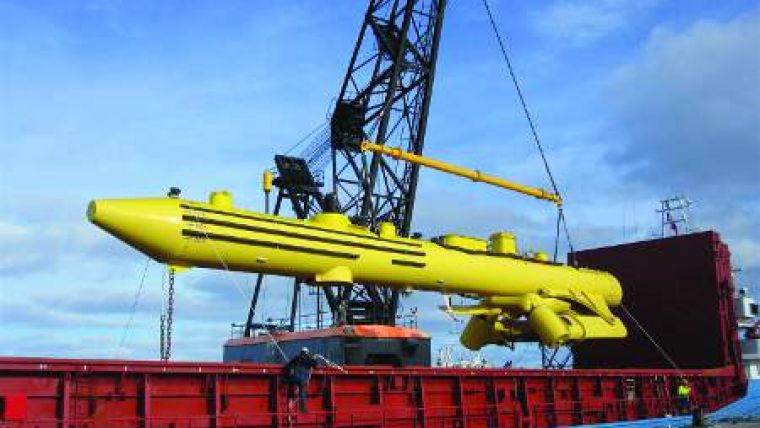Offshore Wave Power Brought Onshore
In the summer of 2011, Orkney-based Scotrenewables launched its prototype floating tidal turbine, the SR250, designed to minimise the installation and maintenance costs of tidal energy compared to seabed-mounted tidal turbines.
The 33-metre long, 100 tonne SR250 is fixed to a mooring turret which is tethered to the sea floor. The construction of the turret allows the turbine to move with the direction of water movement, positioning itself automatically for optimal energy capture in much the same way that windmills turn to face the oncoming wind.
Harnessing the renewable power is just one part of the process, it also needs to be exported to the grid onshore through a medium voltage cable. The Scotrenewables design, that combines a dynamic turbine mounted on a tethered turret, can put significant strains on the riser section of the export cable. Designing the right cable and connector infrastructure system was important from the outset to ensure that power harnessed by the turbine could be reliably fed to the onshore grid. Scotrenewables chose MacArtney to provide the infrastructure for its 250kW prototype and its design is a result of close cooperation between engineers from both companies.
Infrastructure that connects dynamic systems to static cable anchoring needs to be carefully designed to reliably maintain power and signal contact as the turbine moves horizontally with the tide as well as vertically with wave movement. The SR250 turbine has a turret and a vertical swivel. At the turret, a 6.6kV wet mate connector acts as a stab plate. As the turbine turns about this axis to face the water flow, this swivel turret holds the dynamic unit on the anchoring and the swivel ensures that the signal and power connections in the cable remain intact and prevent them from twisting during the 360° movement.
Scotrenewables and MacArtney worked together to custom design the 6.6kV umbilical that can carry the required 250kW. For this prototype, the 3,500 metre cable also has two signal STPs (screened twisted pairs) that transfer data to and from the turbine to shore.
Protecting the cable extends its functional life and preventing bending and twisting of the cable at the termination point is vital for preventing cable fatigue and failure. At the point of contact between cable and turbine, a steel stress termination on the high voltage wet mateable connector pair take the strain off the cable. The termination point where the cable exits the stress termination is also vulnerable as vibrations in the cable can weaken it over time. A bend stiffener was designed into the system to dampen the vibrations to help protect the cable from fatigue and extend its working life.
The system will be tested in the waters off Orkney for two years, exporting power to the grid. Testing the turbine in real sea conditions will provide the company with advice and experience before producing the full-scale 1-2MW version.














